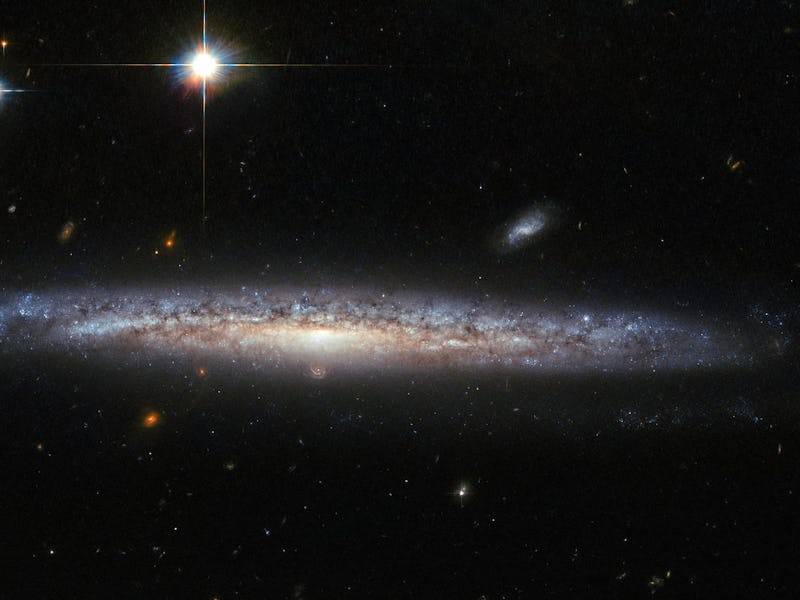Not all supernovae were created equal. Astronomers classify the hundreds of stellar explosions they observe every year based on how they occurred, how bright they shine, and the shape of their molecular clouds. But there is one type of these cosmic events that are so inexplicable that scientists had to invent a whole other classification for them.
They’re called “calcium-rich supernovae” and only a handful off them have been observed. One of these took place in the NGC 5714 galaxy, seen below back in 2003. This spiral galaxy is located about 130 million light-years away in the constellation of Boötes and was captured by the Advanced Camera for Surveys on the Hubble Space Telescope. The pinwheel-shaped galaxy has become a point of great interest for astronomers that are hungry to learn about these mysterious celestial occurrences.
Join our private Dope Space Pics group on Facebook for more strange wonder.
Supernovas are usually dramatic and violent explosions that mark the death of a massive star. Instead, the explosion that took place 8000 light-years away from NGC 5714, named SN 2003dr, was much more tame. The interstellar explosion was fainter and faded more quickly compared to its astronomical siblings but produced a large amount of calcium, a phenomenon that gave this subclass of supernovae their name.
Astronomers have compared these rare intergalactic events to “Type Ib and Type Ic supernovae,” which are caused by the core collapse of a huge stars. While they might resemble these stellar explosions researcher actually have no idea what causes eruptions of calcium. A 2009 paper in the journal Nature was only able to point out that something else causes them.
Discovered by William Herschel in 1787, NGC 5714 was host to a fascinating and rare event in 2003 known as a calcium-rich supernovae.
Another peculiarity of calcium-rich supernovae is that they occur far away from galaxies. Other supernovas are often spotted in areas with high star density, like inside of NGC 5714. But SN 2003dr occurred outside of the stellar system. This as lead astronomers to believe that these explosions are coming from binary star systems — or a pair of two stars orbiting a common center — that were ejected from their galaxy by strong gravitational forces.
Calcium-rich supernovae might be pretty rare, but they are thought to be major contributors to the high levels of calcium found in certain regions of the cosmos.
While scientists are still perplexed by these supernovae, NGC 5714 is harboring secrets that could be used to solve this interstellar mystery. Experts will continue to look to the stars for guidance in answering the questions they have.
